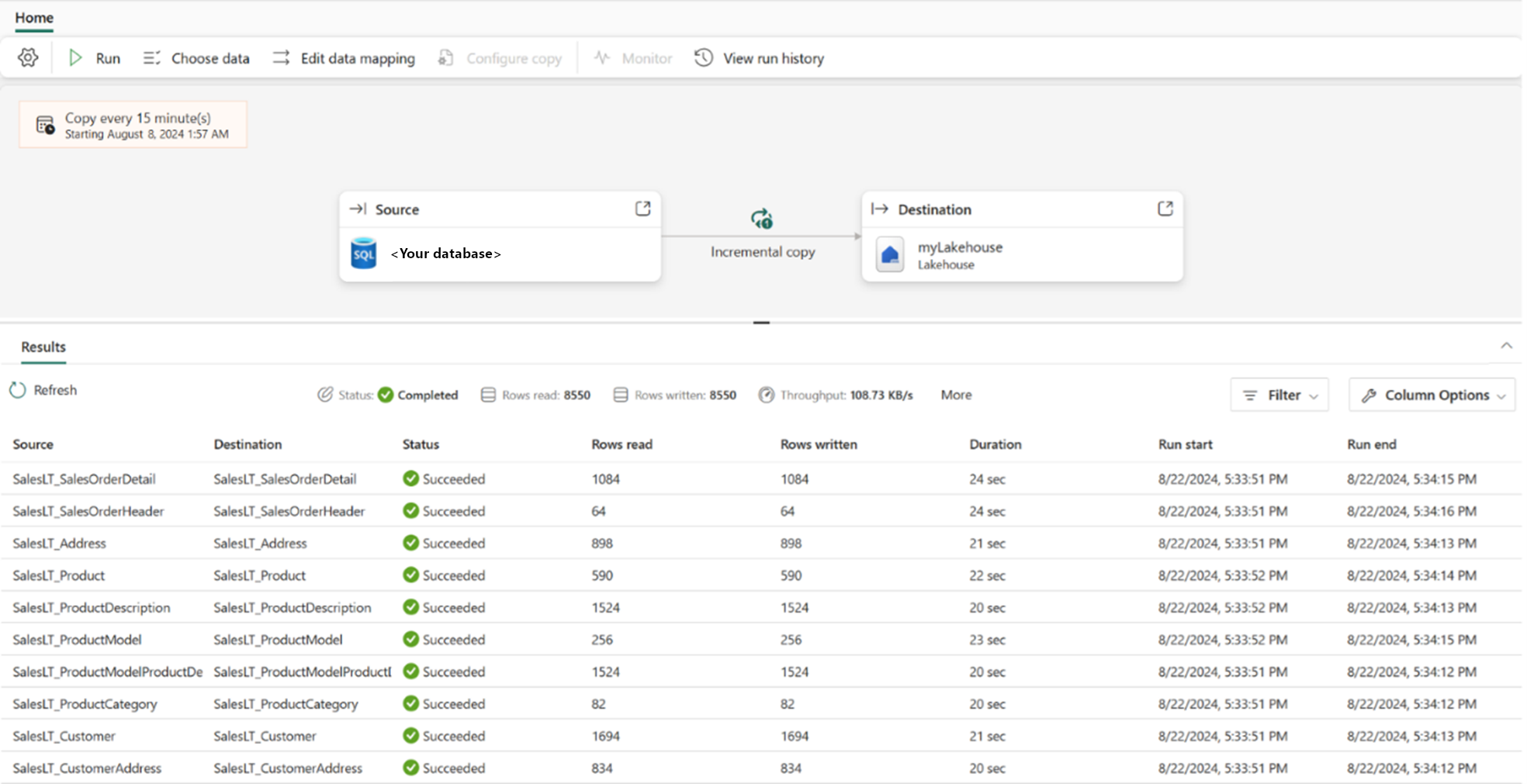What is the Copy job (preview) in Data Factory for Microsoft Fabric
Data Factory in Fabric empowers users to seamlessly integrate data from over 100 built-in connectors - both sources and destinations - through a visually intuitive interface. The Copy activity, working within data pipelines, facilitates data ingestion. Meanwhile, Dataflow Gen2 supports data transformations, and pipelines orchestrate the flow of integration.
Advantages of the Copy job
While the legacy Copy activity within data pipelines handles data ingestion with bulk/batch operations, creating data pipelines in Data Factory still proves challenging for many users that are new to the field, with a steeper learning curve. So, we're thrilled to introduce the Copy job, elevating the data ingestion experience to a more streamlined and user-friendly process from any source to any destination. Now, copying your data is easier than ever before. Moreover, Copy job supports various data delivery styles, including both batch copy and incremental copy, offering flexibility to meet your specific needs.
Some advantages of the Copy job over other data movement methods include:
- Intuitive Experience: Experience seamless data copying with no compromises, making it easier than ever.
- Efficiency: Enable incremental copying effortlessly, reducing manual intervention. This efficiency translates to less resource utilization and faster copy durations.
- Flexibility: Take control of your data copying preferences. You can choose which tables and columns to copy, map the data as needed, and define the behavior for reading and writing. Moreover, you can set schedules that best suit your requirements, whether it's a one-off task or a recurring operation.
- Robust performance: A serverless setup enabling data transfer with large-scale parallelism, maximizing data movement throughput for your system.
Supported connectors
Currently, you can use the Copy job for cloud data transfer or copying data from an on-premises data store via gateway. The Copy job supports the following data stores as both source and destination:
- Azure SQL DB
- On-premises SQL Server
- Fabric Warehouse
- Fabric Lakehouse
- Amazon S3
- Azure Data Lake Storage Gen2
- Azure Blob Storage
- Amazon RDS for SQL Server
The product team is exploring further connector support, so stay tuned for updates.
Copy behavior
You can choose from the following data delivery styles.
- Full copy mode: Each copy job run copies all data from the source to the destination at once.
- Incremental copy mode: The initial job run copies all data, and subsequent job runs only copies changes since the last run. The changed data is appended to your destination store.
You can also choose how data is written to your destination store.
By default, Copy Job appends data to your destination, so that you will not miss any change history. But, you can also adjust the write behavior to upsert or overwrite.
- When copy data to storage store: New rows from the tables or files are copied to new files in the destination. If a file with the same name already exists on target store, it will be overwritten.
- When copy data to database: New rows from the tables or files are appended to destination tables. You can change the write behavior to upsert (on SQL DB or SQL Server) or overwrite (on Fabric Lakehouse tables).
Incremental column
In incremental copy mode, you will need to select an incremental column for each table to identify changes. Copy Job uses this column as a watermark, comparing its value with the same from last run in order to copy the new or updated data only. The incremental column has to be a timestamp or an increasing INT.
Region availability
The Copy job has the same regional availability as the pipeline.
Pricing
The Copy job uses the same billing meter: Data Movement, with an identical consumption rate.
